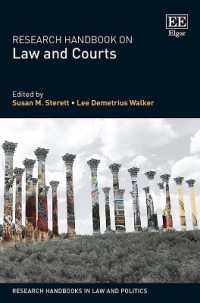- ホーム
- > 洋書
- > 英文書
- > History / World
Full Description
Bosnian Muslims, East African Masai, Czech-speaking Austrians, North American indigenous peoples, and Jewish immigrants from across Europe—the nineteenth-century British and Habsburg Empires were characterized by incredible cultural and racial-ethnic diversity. Notwithstanding their many differences, both empires faced similar administrative questions as a result: Who was excluded or admitted? What advantages were granted to which groups? And how could diversity be reconciled with demands for national autonomy and democratic participation? In this pioneering study, Benno Gammerl compares Habsburg and British approaches to governing their diverse populations, analyzing imperial formations to reveal the legal and political conditions that fostered heterogeneity.
Contents
List of Illustrations
List of Maps, Tables and Figures
Acknowledgements
List of Abbreviations
Introduction
Chapter 1. Nation-States Emerging on the Semi-Periphery
Chapter 2. Statist Approaches
Chapter 3. Imperialist Discrimination in Colonial Contexts
Chapter 4. The United Kingdom between Nation, State and Empire
Chapter 5. Empires and Ethnic Heterogeneity
Conclusion
Bibliography
Index of Names and Places
Index of Subjects








